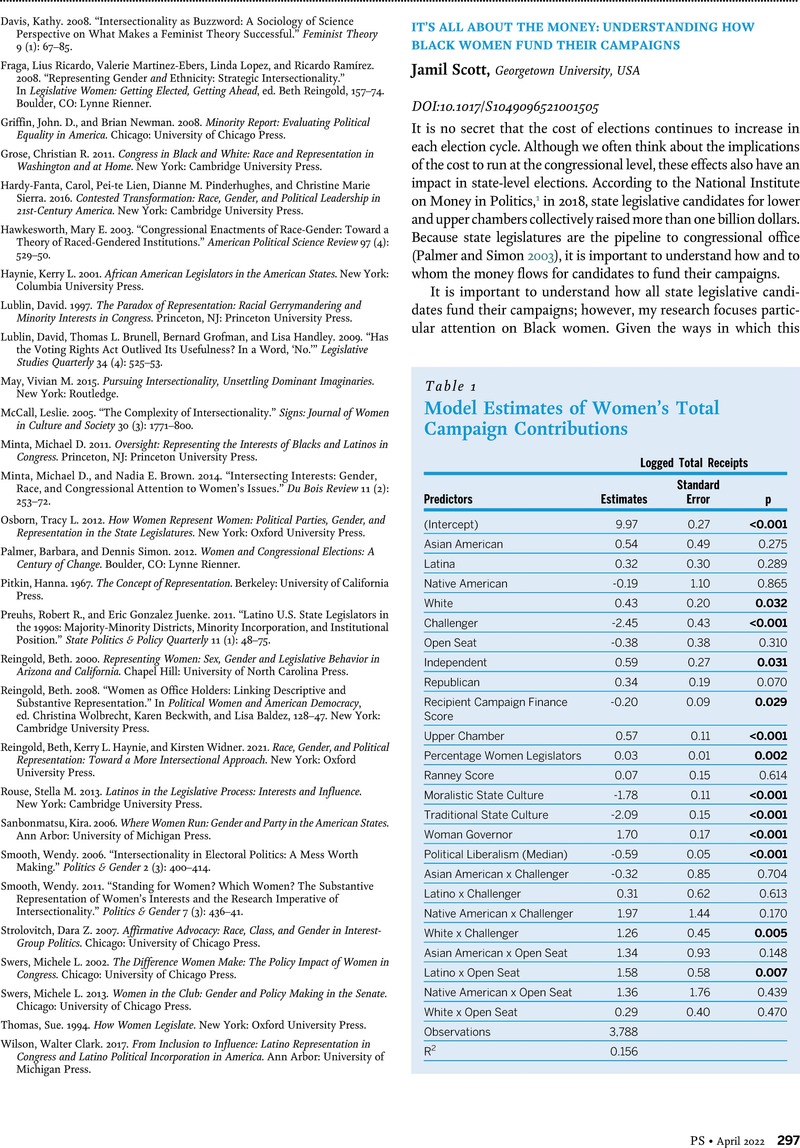Crossref Citations
This article has been cited by the following publications. This list is generated based on data provided by Crossref.
Sorensen, Ashley
and
Chen, Phil
2024.
She works hard for the money: explaining racial and gender disparities in candidate success in primary elections.
Politics, Groups, and Identities,
Vol. 12,
Issue. 4,
p.
806.
Smith, Andrew Hewitt
and
Kazungu, Conny Sidi
2025.
Sex, Campaign Contributions, and State Courts of Last Resort.
Political Research Quarterly,
Koprowski, Samantha
Benner, Amy
and
Sanbonmatsu, Kira
2025.
Agents of Change? Women Candidates and Support for Campaign Finance Reform.
Journal of Women, Politics & Policy,
Vol. 46,
Issue. 2,
p.
93.



